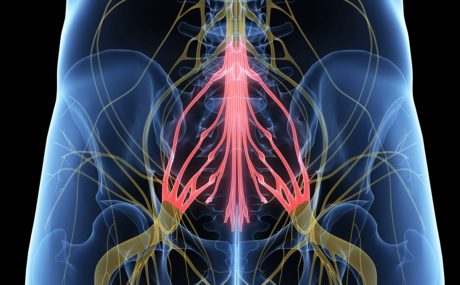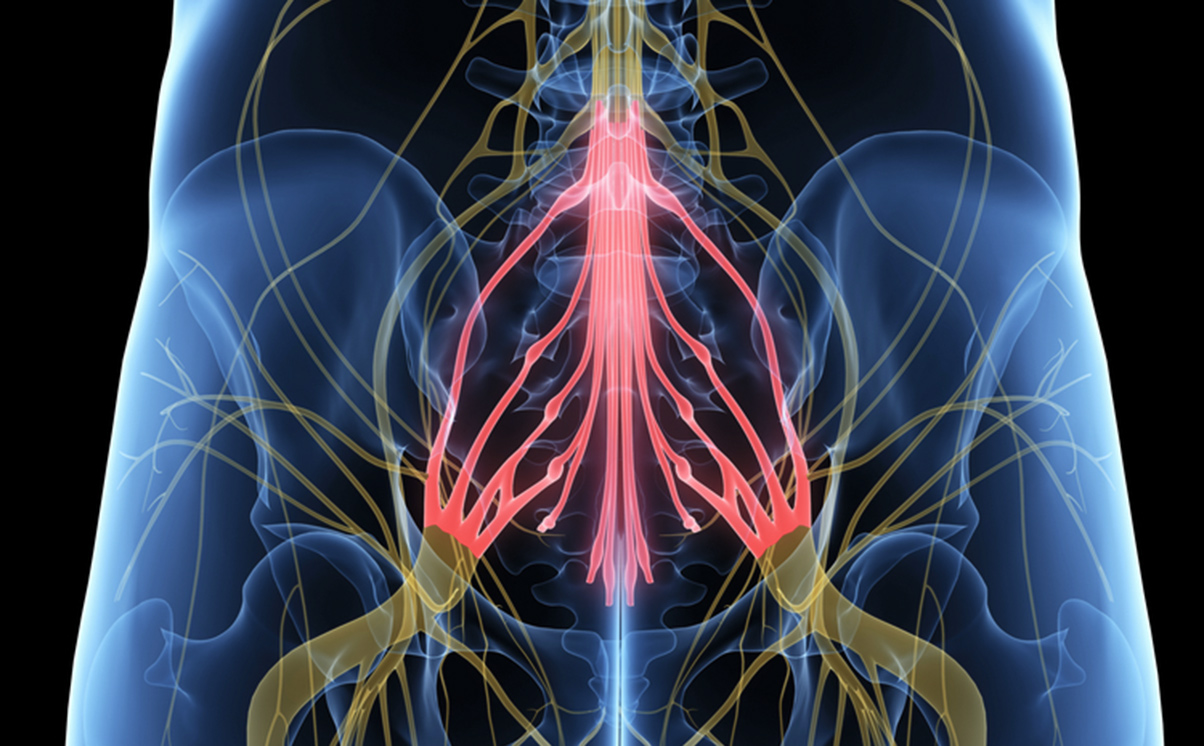Stewarts acted as the proud headline sponsor at the Spinal Injuries Association Rebuilding Lives Festival, held at the Birmingham Library. Nadia Krueger-Young, senior associate in our Clinical Negligence team, spoke on an expert panel about cauda equina and the causes and outcomes of delayed diagnosis from a medico-legal perspective.
She spoke alongside SIA member Suzanne MacLeod and Damian Smith, a SCI nurse specialist who presented on the Suspected CES Pathway now being implemented to try to improve recognition and speed up treatment. Nadia’s presentation is outlined in this article.
What care should suspected cauda equina syndrome patients expect?
Cauda Equina Syndrome (CES) is a spinal surgical emergency that requires urgent specialist assessment and intervention. If the condition is not managed in a time efficient manner, it can lead to a range of severe permanent disabilities including permanent limb paralysis, permanent loss of bowel, bladder and sexual function. This is devastating to a patient’s quality of life.
Given the potential severity, the Society of British Neurological Surgeons (SBNS) and the British Association of Spine Surgeons (BASS) has developed standards of care for patients presenting with suspected CES. The cornerstone of these recommendations includes access to emergency MRI scanning, as this often dictates whether emergency surgery needs to take place.
The Standards of Care for Investigation and Management of Cauda Equina Syndrome as set out by the SBNS and BASS are:
- The reliability of clinical diagnosis of threatened or actual CES is low and there should be a low threshold for investigation with an emergency MRI scan at the request of the examining clinician and MRI must be available at the referring hospital 24/7.
- The decision to perform an MRI does not require discussion with the local spinal services.
- The MRI must be undertaken as an emergency in the patient’s local hospital and a diagnosis achieved prior to any discussion with the spinal services.
- The MRI must take precedence over routine cases and any reasons for a delay or a decision not to perform an emergency scan should be clearly documented.
- If MRI is contraindicated, discussion with local spinal services is appropriate.
Can more be done to help patients?
Despite these recommendations, patients with suspected Cauda Equina Syndrome are not being referred in line with agreed treatment protocols, and disputes arise as a result of negligent care. 23% of litigation claims for spinal injuries in England relate to CES, and claims for cauda equina in the 10 year period between 2008 and 2018 cost the NHS over £186m (including payments for claimant legal costs, NHS legal costs and damages).
There are two main medico-issues which can result in a clinical negligence claim: a failure to recognise the red flag symptoms of cauda equina syndrome, and delays in obtaining MRI imaging once CES is suspected.
More widespread recognition of the ‘red flags’ of cauda equina syndrome would help faster diagnosis and care. These include:
- sciatica in both legs
- motor weakness, sensory loss or pain in both legs
- anal and/or buttock numbness
- loss of feeling between the legs (saddle anaesthesia)
- bladder retention and/or incontinence
- bowel disturbance/incontinence
- erectile dysfunction
The common reasons for not recognising red flag symptoms are lack of adequate history taking or experience on the part of the professional, or simply lack of examination. Once red flag symptoms are recognised the appropriate action is immediate referral to hospital via A&E; and once at A&E, the most common reason for delays in diagnosis of CES is delays in obtaining MRI imaging.
The principal reason for patients with suspected CES not receiving timely MRI scans is a lack of out of hours radiography support in referring units. Even though MRIs are switched on out of hours, in many instances a radiographer may not be available to operate the scanner. If an MRI scan is not available, the patient must be transferred for emergency MRI in cases of suspected CES.
Issues of quantum
65% of cauda equina claimants are between 31-50 years old, and life expectancy is often only minimally reduced unless there are other comorbidities
Because of the relatively young age of cauda equina claimants and because of the complexities of their condition, claims can often run into millions. This is despite Medical Defence Union (MDU) statistics which say that the large majority of cases settled by the MDU have had compensation agreements of under £100,000
Only 12% of cases settled by the MDU between 2008 and 2018 attracted damages payments of over £500,000; at Stewarts, we regularly settle cauda equina cases for over £1m and often for several millions.
Conclusions
Cauda equina cases still make up a large proportion of spinal injury clinical negligence claims, and patients require the very best care. The most common issues are inadequate history taking and delays in MRI scanning, leading to negligence cases in some examples.
The severity of cauda equina injuries and the impact on daily activities of living can sometimes be underestimated, with cases consistently being valued lower than they could potentially achieve even via settlement. Cauda equina claimants are often young and their needs are invariably complex, which should be reflected in the value of their claims.
You can find further information regarding our expertise, experience and team on our Clinical Negligence pages.
If you require assistance from our team, please contact us.
Subscribe – In order to receive our news straight to your inbox, subscribe here. Our newsletters are sent no more than once a month.






